How to save money on food - 82 tips for shopping and cooking
Save money on your food shop and make the food you buy go further with our top tips...
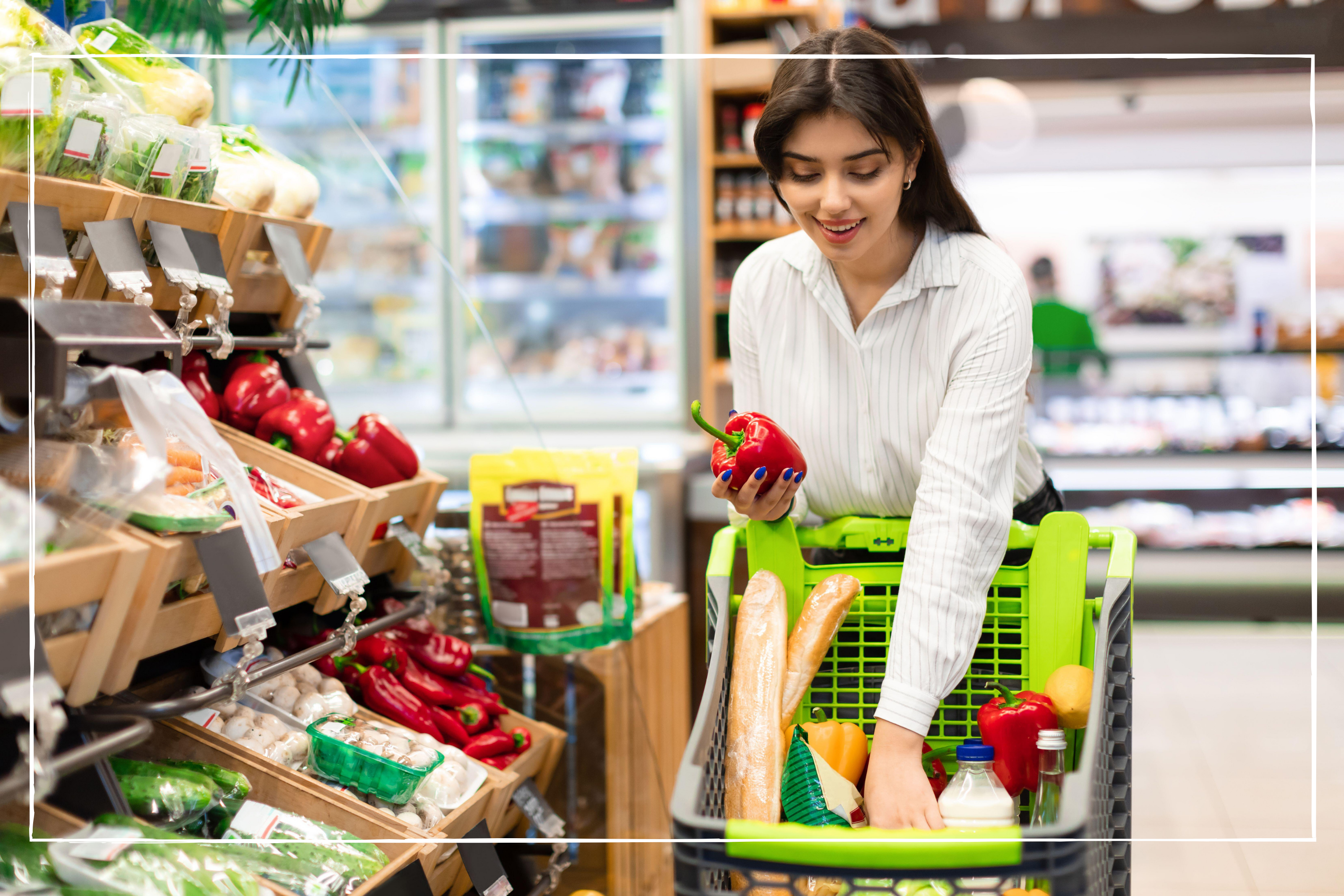
We've also noticed our supermarket shop costs more than it used to, so here are some handy tips on how to save money on food shopping.
Knowing how to cut your food bill is essential as the cost-of-living crisis continues and we're all concerned about how to save money. You’re already likely to be struggling with rising energy bills, petrol prices mortgage payments, or rent, and you’ll also be paying more for your weekly food shop. According to the latest figures from the Office of National Statistics, food price inflation hit 19.2% in March 2023 (compared to 5.2% in March 2022) as the cost for supermarkets buying in produce is soaring and being passed on to consumers. Everything from transport and general commodity costs such as wheat are soaring in price.
Myron Jobson, senior personal finance analyst at interactive investor, says: “Going to the shop for groceries is taking a larger chunk out of household budgets at a time when we are spending more on general bills, too. Everything from snacks to essentials like milk and tea has soared in price.”
Along with tips on looking out for the best deals, we've rounded up some advice on making the most of leftovers, ensuring food stays fresher for longer, and the best ways to freeze food. We've also pointed out the sneaky supermarket tricks that are designed to make you spend more.
How to save money on food
1. Make a shopping list This is pretty obvious, but we can't stress how important it is. There's nothing worse for your bank balance than an aimless wander around the supermarket. We're all guilty of quickly jotting down a few ideas and not really considering what we really need. A well-thought-out list will ensure that you don't stray away from the food you will really use. Remember that supermarkets want to make you spend, so a shopping list can help you focus on your essentials.
2. Set yourself a budget It's good to know how much you are planning to spend before you even leave the house. This will help you decide if you really need that expensive product. Setting yourself a budget will also make you feel more in control of what you are buying and should hopefully avoid any shocks when you come to check out.
3. See what you already have in your cupboards Before heading to the shops, it's good to really look through your cupboards, fridge and freezer to see what you already have in. There could be something lurking in the back, that you don't want to double up on. Do a monthly clear-out of your cupboards and freezer so you can find items that you might've forgotten about.
GoodtoKnow Newsletter
Parenting advice, hot topics, best buys and family finance tips delivered straight to your inbox.
4. Don’t shop hungry We've all been there. Forgotten to eat lunch before the big shop and suddenly that cake aisle is calling! A full stomach will help you view food in a more practical way, rather than your brain thinking about what to eat now.
5. Try and stick to cash If you've given yourself a strict budget, taking the exact cash with you is a good way to ensure you stick to it. Rather than just chucking it on your card and thinking about it later, having the actual cash in your hand will really make you think about how much you're spending. If you do happen to go over your budget you can always pay the rest on your card - most shops are happy to split the payment. Note down how much you overspent and increase the amount you take out next time.
6. Consider swapping your supermarket Knowing which is the cheapest supermarket for the foods you want to buy is an easy way to save money on food. Cheaper supermarkets like Lidl and Aldi offer brilliant discounts and quality. Shops like Poundland sell branded household products and some food items - worth a look if you've got one close to you. See how one of our contributors managed to slash her monthly food bill, just by switching supermarket.
7. Shop online One sure way of sticking to your shopping list is by doing it online. You can enter exactly what you want without the worry of being tempted by other products. Try to shop around for the cheapest price for your basket before ordering - and don't forget to consider the delivery costs.
8. Collect your shop instead of delivery If you spend above a certain amount, which is usually around the £60 mark, you can often get free delivery. But otherwise, delivery charges can be steep. Sainsbury’s, for example, charges a hefty £7 for deliveries under £40, while Tesco charges £4.50 on deliveries. So if you can, why not click and collect instead? Your shopping will be sorted and ready for pick up at a time that suits you.
9. Check out online discount stores Save money on food by choosing products that are just past their sell-by-date. Items are available for a fraction of the price on sites such as Approved Foods andCut Price Barry’s, which can pass on massive savings to their customers.
10. Try cashback sites If you're spending the cash already - you might as well make a little money from it. Cashback sites like Topcashback and Quidco often have deals where you can earn money on your online shop. All you need to do is click a link that takes you to the site.
11. Use a money-saving app Too Good To Go matches app users with local restaurants and food outlets that have food left at the end of the day to sell for less. This way, the food doesn’t go in the bin so you’re doing your bit to reduce food waste, too. You might expect to spend anything from around £1 to £7 for a ‘magic bag’ from a local business that contains a surprise mix of products. Meanwhile, Olio is a food-sharing app that enables people to share food they won’t use with their local community. You can simply sign up, and find what’s on offer and sort a time to collect.
12. Use coupons Using coupons and voucher codes can make a big difference to the cost of your food shop. You can find these online from across the internet. Sites like MyVoucherCodes regularly have discount deals with the big supermarkets. For example, download the Lidl Plus app for money off coupons each week, which you must activate before you get to the checkout. Find some of the latest voucher codes on MoneySavingExpert.
13. Keep a note of offers you’ve seen Food adverts are everywhere! It's hard to remember the discounts they shout about when you actually get to the store. Take a quick photo on your phone or tear it out of the newspaper or magazine. Although, be careful not to let one good offer tempt you to shop in a supermarket that would otherwise be too expensive for you. The amount you save will not cover the extra cost of other ingredients. Also look for in-store initiatives such as Asda's Kids Eat for £1 offer and similar for other ideas on how to feed the family for less.
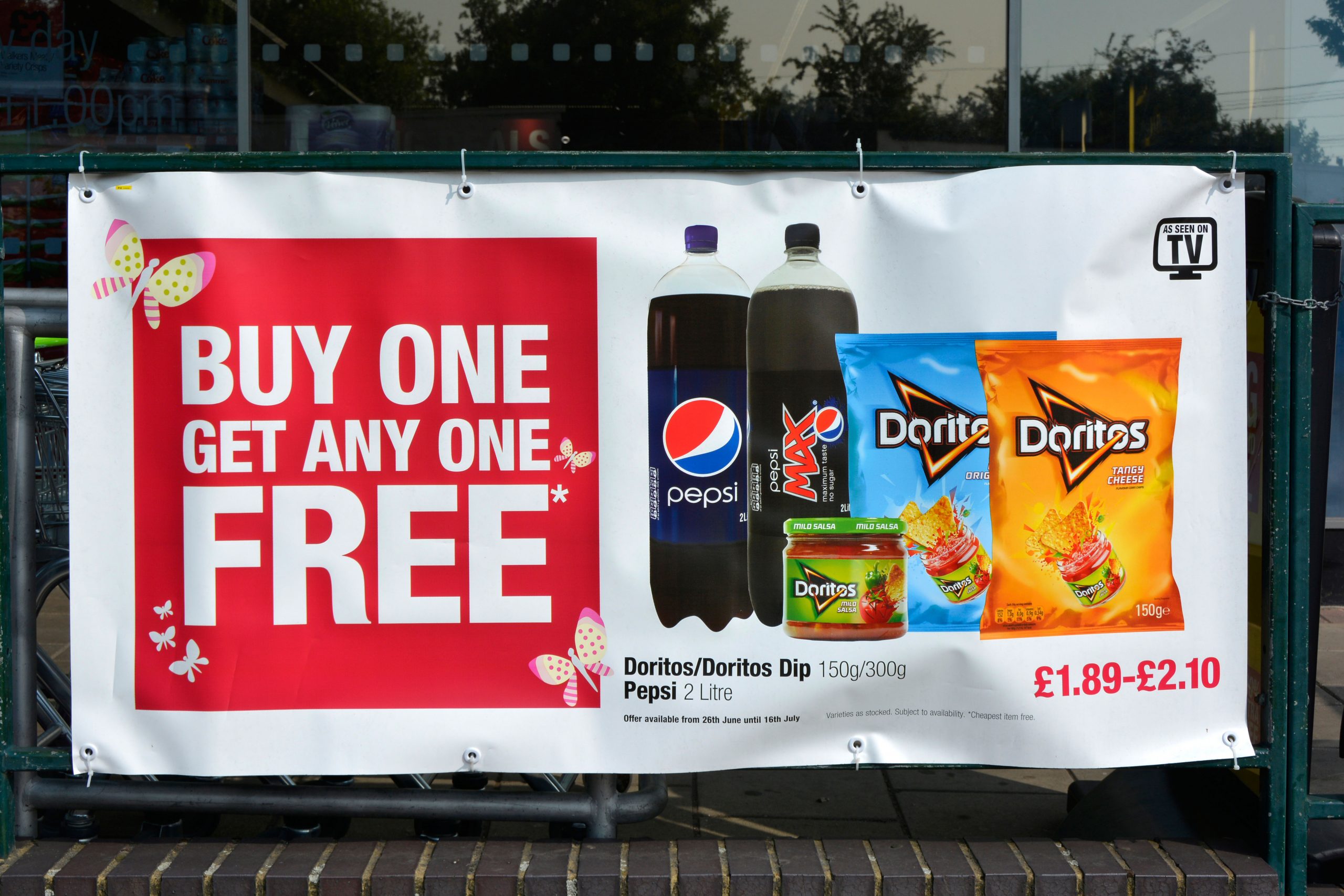
14. Lookout for Bank holiday offers They may only occur a few times a year, but Bank holidays are a goldmine for reduced items. They're the only days when supermarkets are forced to be closed so it will undoubtedly lead to more items that need to be sold before they go out of date - that reduced section has never looked so full!
15. Bring your own bags We all know by now supermarkets will charge you up to 10p or 20p per page. Avoid these costs and help the planet by taking your own. If you often forget, leave a stash in your car boot
16. Leave the kids at home Little hands and hungry faces will undoubtedly lead to a few extra things landing in the trolley (and that’s not even thinking about the toy aisles in most supermarkets). If you can, leave the kids at home so you can keep focused on the task at hand!
17. Make the most of loyalty cards Supermarket loyalty cards are a great way to save money on food and earn a little extra while you shop. Sainsbury's Nectar Card is also available for use in other stores like Homebase, Argos and eBay, so it's easy to build up quite a few points. A Tesco's Clubcard can offer you huge savings in-store - and points can be transferred into higher-value things such as days out and family meals. Savvy shopper and blogger Faith Archer said: “I always check the Morrisons More app before heading to the till, for discounts on the foods I buy most often and occasional %5 vouchers, while Tesco Clubcard unlocks loads of cheaper prices.”
- 14 ways to collect more Tesco Clubcard points
- How to reclaim up to two years of lost and unused Tesco Clubcard vouchers
- 15 surprising ways to spend your Tesco Clubcard vouchers
- How to collect and spend Nectar card points
18. Plan your meals and cook from scratch (if you can) While it may seem like a big task, planning family meals for the week is a great way to save money on food. By ensuring you know exactly what you need, you won’t overspend or become tempted by last-minute convenience foods, which are often less healthy and more expensive.
Money-saving campaigner Cherry Healey told us, "Prepping a shopping list and family meals for the week helps me stay one step ahead. I don’t always have time, but generally cooking from scratch is cheaper than buying pre-prepared meals, plus you feel like you’ve conquered your own Everest!" Remember, cooking from scratch doesn’t have to mean spending hours in the kitchen. We have plenty of 15-minute recipes the family will love.

19. Try and avoid top-up shops Popping to the shops to get one or two things can often lead to another long shopping list, the temptation being too great once you're there. If you can, try and limit popping to shops for extra ingredients outside of your big shops to fresh produce, like fruit and veggies. If you do find yourself topping up your shop, make a note of the things you often tend to buy and add more of them to your regular shopping list.
20. Buying wonky fruit and veg Buying fresh fruit and veg adds up, but you may be able to cut the cost by finding misshapen produce. Carrots or courgettes that come in weird and wonderful shapes, for example, are often cheaper than the standard range. Faith Archer, money blogger at Much More With Less, says: “I look out for ranges such as Morrisons Naturally Wonky, Tesco’s Perfectly Imperfect and Sainsbury’s Imperfectly Tasty to cut costs. Lidl does a ‘Too Good To Waste’ box with 5kg of fruit and veg for just £1.50, while Oddbox will deliver a variety of different fruit and veg boxes direct to your door.”
21. Going veggie Let’s face it, meat can be eye-wateringly expensive. Even if you’re not keen on turning fully veggie, simply including more veg-only meals in your week can really help to save money on food. Try adding beans, pulses and lentils to your basic dish instead of meat. Money blogger Faith Archer said: “Many budget meals are naturally veggie – think tomato soup, all kinds of eggs and baked potatoes with cheese and beans. I often add canned beans or red lentils to soups and stews – they are inexpensive, quick to cook, and make the food more filling.”
22. Find out when foods are reduced Every shop has a rota for when it will start reducing items. If you often find gems in the reduced section of the shop (be careful with best before dates), it's good to know when to visit a shop to get the first pick of marked-down goods - all you have to do is ask. It's one of the most satisfying ways to save money on food! Try not to get carried away in the reduced section though - even if it's cheap, you still need to ask yourself if you will actually use it before it goes off. If it can be frozen - all the better!
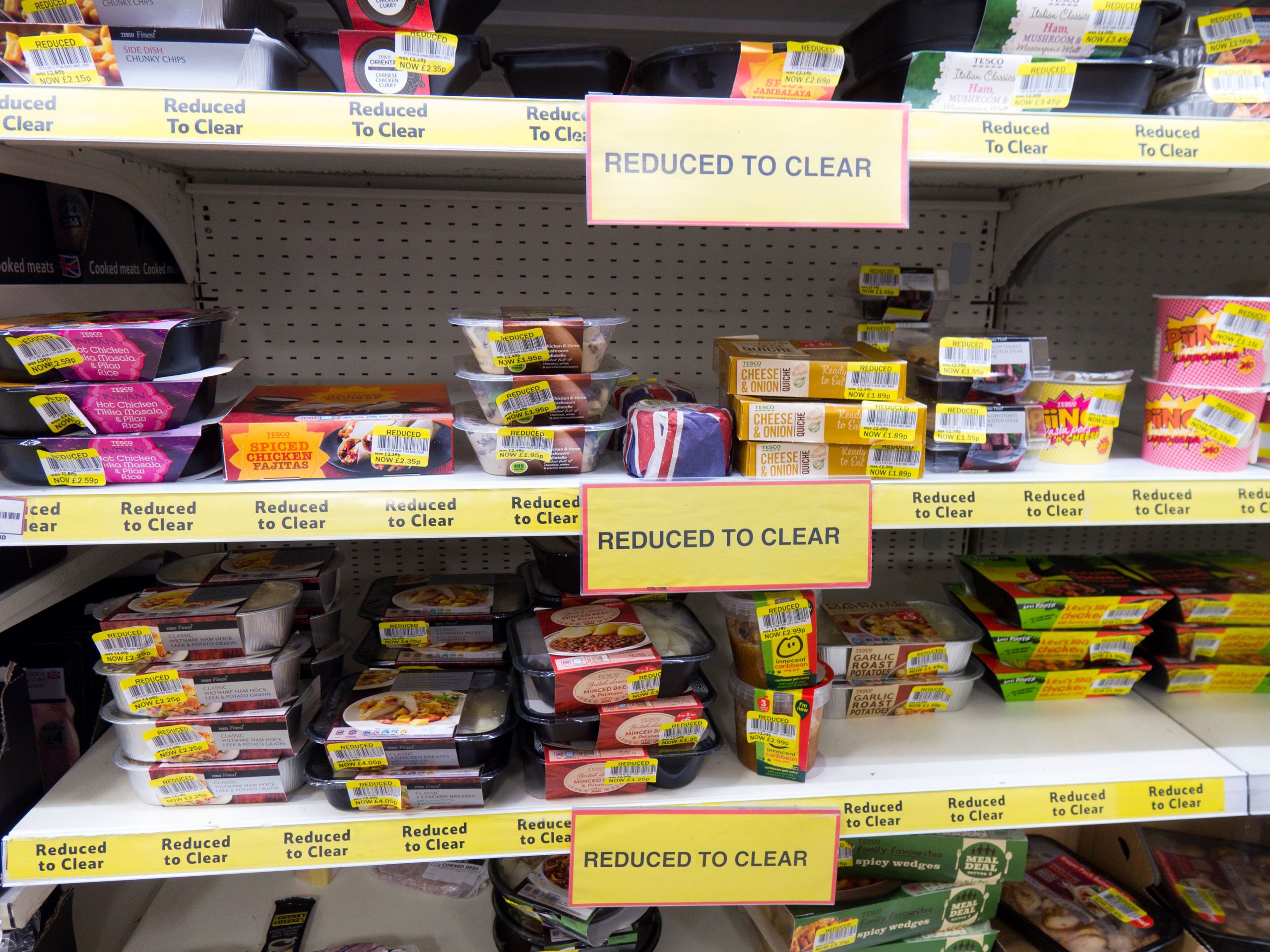
23. Choose cheaper cuts of meat When it comes to meat, do you just grab the cut you recognise? You could save lots of money if you know which cuts are cheaper. For instance, chicken thighs are much tastier than breasts and work well in tray bakes and casseroles and a cheap lamb shoulder is a lovely cut for a roast dinner. Switching out beef cheeks, brisket or mince instead of steak is a great option; pork belly instead of loin; or even using offal like liver and kidney. Some supermarkets have in-store butchers who would be happy to help you find the right cut of meat for you.
Organic meat is generally one of the more expensive things you can buy on your food shop, but buying cheaper cuts is a great way to include them without breaking the bank. Money-saving campaigner Cherry Healey told us, "Slower-cooked organic cuts of meat are really tasty, and it works brilliantly if you’re able to take a little more time with your cooking."
24. Check that 'offers' give you enough of a saving You may only want to buy one but there's a buy 4 for the price of 3 offers - it sounds like a good deal but do you really need 4? Add up how much money you are actually saving - 3 for £1 deals are notoriously misleading - and whether you actually need the extra food. Always check the £ per 100g on the shelf labels as you can make your money go further. Sometimes the bigger packs work out more expensive per 100g than the smaller ones!
25. Test the value range You can often save a pile of cash buying the value range, particularly when it comes to your basic foods. For example, a 500g bag of Smart Price Asda pasta will set you back 29p, compared to around 80p for the standard range. Similarly, Morrisons Savers chopped tomatoes are 32p for 400g, compared to 45p for its standard version. Abigail Yearley, spokesperson for TopCashback, says: “But while own brands can be cheaper, but if branded items are on offer, you may save more opting for that instead. The trick is to be flexible and not committed to one brand over another.”
26. Beware the 'Finest' options We buy own-brand products to save money on food so we automatically assume that because it's from the supermarket's range, it must be cheaper. Finest ranges can often be more expensive than branded products - which is fine if you fancy a treat, it's just worth checking.
27. Buy in bulk Although bigger packs will cost you extra in the short term, they'll help you save money on food in the long run. Buy all your staples in bigger packs – things like cereals, pasta, rice, cheese and tinned beans. If it's something you know you're going to be using in months to come like pasta or tinned goods, you can never have too much - and things that don't have a short shelf life can last for ages in the cupboard. Remember, you don't need to store your bulk buys in the kitchen. Other cupboards in the house or even the shed or garage can be turned into a pantry.
28. Try the deli counter It’s easy to assume that the deli counter is just full of fancy products and is therefore worth avoiding altogether, but that’s not necessarily the case. You can often get great deals on things like cheese and ham because you’re not paying extra for the packaging. It’s worth checking – but compare with prices of items on the shelves to make sure you’re getting the best deals.
29. Visit local markets Some local markets have great deals on fruit and veg, and also reduce their prices towards the end of the day, so timing your visit may be wise. But check online beforehand or with the stall owners when’s the best time, so you don’t arrive after everything’s gone.
30. Avoid bags of salad Bags of prepared lettuce, spinach and salad always seem like a good idea but they have a very short shelf-life and we never seem to use a whole bag. Before buying them, really think if you will use up a whole bag. If not, look for a smaller serving or a cheaper alternative - you can normally buy half a lettuce on its own.
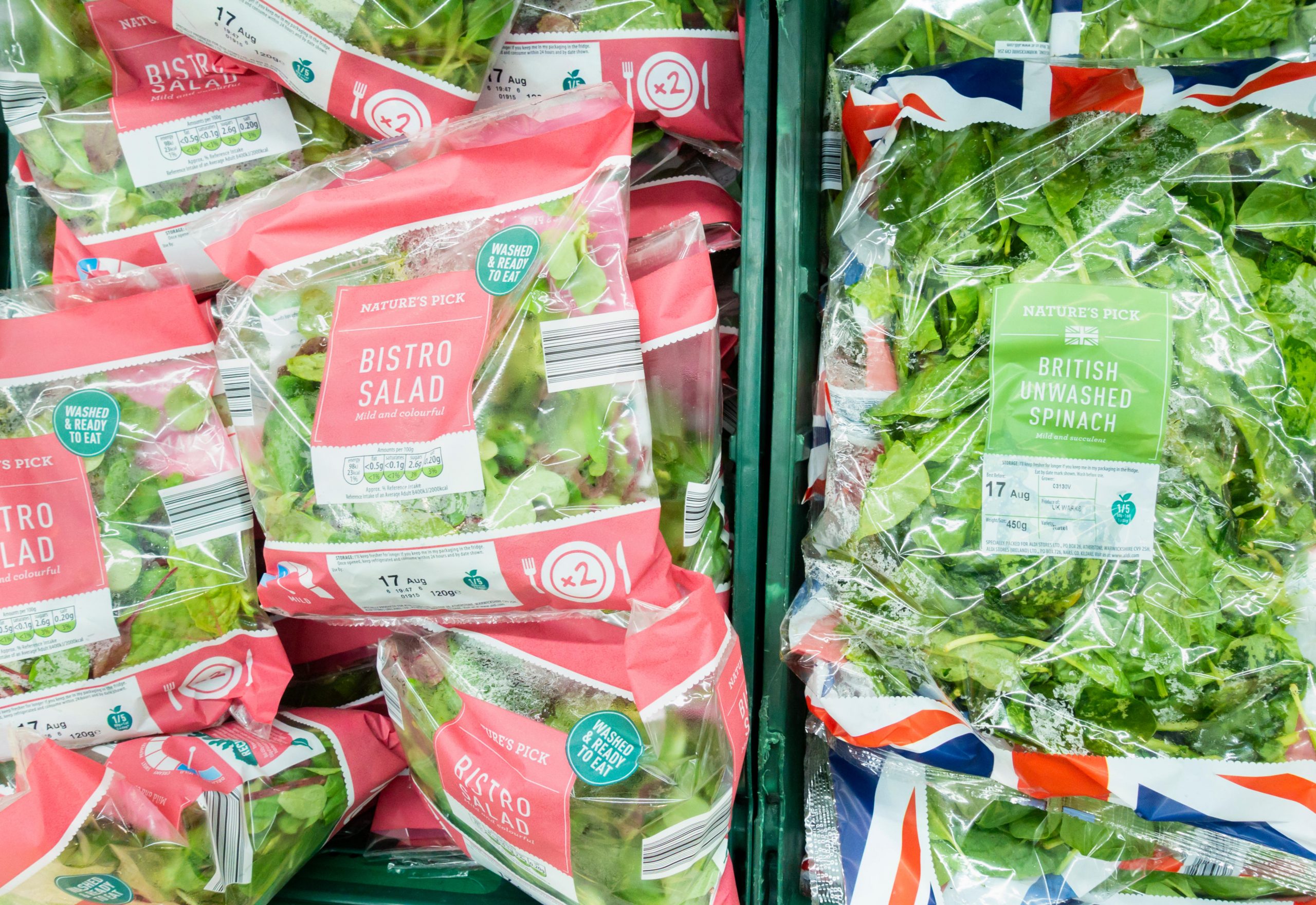
31. Buy seasonal fruit and veg When certain fruit and vegetables are in season they can be significantly cheaper than at other times of the year. It's a good time to try an ingredient that may have been too expensive before - asparagus and butternut squash are examples of this. You don't need to do too much research to find out what is in season as they'll normally be on display quite clearly in the supermarket. Take a quick look at our seasonal food calendar so you know what to look out for.
32. Avoid prepared ingredients Pre-sliced or chopped ingredients do come in handy when you're in a rush but they're not value for money. The packaging usually means you'll get much less than if you bought it whole and they often cost more. It may be a little more effort but preparing vegetables yourself will really help to save money on food.
Top tip: Ingredients like swede and butternut squash are notoriously hard to chop - if you give them a quick 1-minute burst in the microwave they will soften up a little.
33. Avoid packaged fruit and vegetables Are you really going to use all 10 bananas? Do you need 20 onions? It's easy to just pick up a bag of fruit or vegetables without thinking how many you are actually going to use. If you only think you will need 3 bananas, it's cheaper to buy them separately.
Top tip: If you're a keen baker, having extra fruit is often an excuse to make a cake. Don't throw out over-ripe bananas, make our banana bread instead.
34. Understand best before and use-by dates It can be hard to know when food is going off and the supermarkets don't make it any easier with all their confusing labels. The one you want to look out for is the use-by-date. Best before is about the quality of the food, not the safety, while display date is for the shops not for us. Eggs are the only exception to the rule - you shouldn't eat eggs after their best before date.
- Use-by-date - indicates when the food may no longer be safe to eat
- Best before date - indicates the quality of the food has started to reduce, but it's still safe to eat.
- Display date - informs the supermarket when to remove the item from the shelves
Top tip: You can freeze ingredients right up until their use-by date - so keep a note of things you think you may not use and when the use-by date is so you can still pop it in the freezer.
35. Look for the latest use-by-date When shops restock their shelves, they don't always put the latest use-by date at the front of the shelf. With just a little rummaging you may find a later date at the back of the shelf - which means you've just earned your food a few more days worth of use.
36. Does that need to be fresh? It's a very simple question to ask yourself and one that could really help you to save money on food. The fresh section is often at the front of the store so you find yourself filling up on items that could easily be dried or frozen. Fresh food doesn't have a long shelf-life so only buy it if there is no other option. Fresh pasta is a nice luxury for example, but with quick-cook dried pasta, there really is no excuse to use it on a regular basis.
37. Buy frozen Frozen fruit, vegetables and fish are often cheaper than fresh and they last much longer. People often think that frozen foods aren't as fresh but the vegetables and fruit are frozen as soon as they're picked so they're actually fresher. A bag of frozen peas can come in really handy when you don't have much in - they can be used as the main ingredient in risotto, soup or a frittata. So for those wondering are frozen foods healthy - the answer is yes!
38. Swap fresh lemon and limes for juice If you need lemon juice for a recipe - do you really need to buy whole lemons? A bottle of lemon or lime juice in the cupboard is much cheaper than a bag of fresh fruit - and will last a whole lot longer. Mix with tap water or fizzy water and they also make a refreshing drink that's much cheaper than Spite (with far less sugar). Lime juice is also a lovely addition to Mexican sauces such as salsa and guacamole.
39. Check your receipts We often grab the receipt, stick it in a bag and never think of it again. Receipts are the most accurate way of documenting what you actually buy and it's always good to have a proper look over what you spent. Some errors can occur, casting an eye over your receipt can help you avoid any extra costs or missed savings.
40. The wonder of tinned tomatoes If you have just one ingredient in your cupboards, it should be chopped tomatoes. Every chef we've asked about their store cupboard essentials has listed this wonder ingredient and we can see why. Super cheap but oh-so-useful, chopped tomatoes can be turned into sauces, curries, dips and can be used for Italian, Mexican and pretty much most cuisines. See our list of tinned tomatoes recipes. You might also like our list of tinned chickpeas recipes, as well as our tinned tuna recipes and canned salmon recipes.
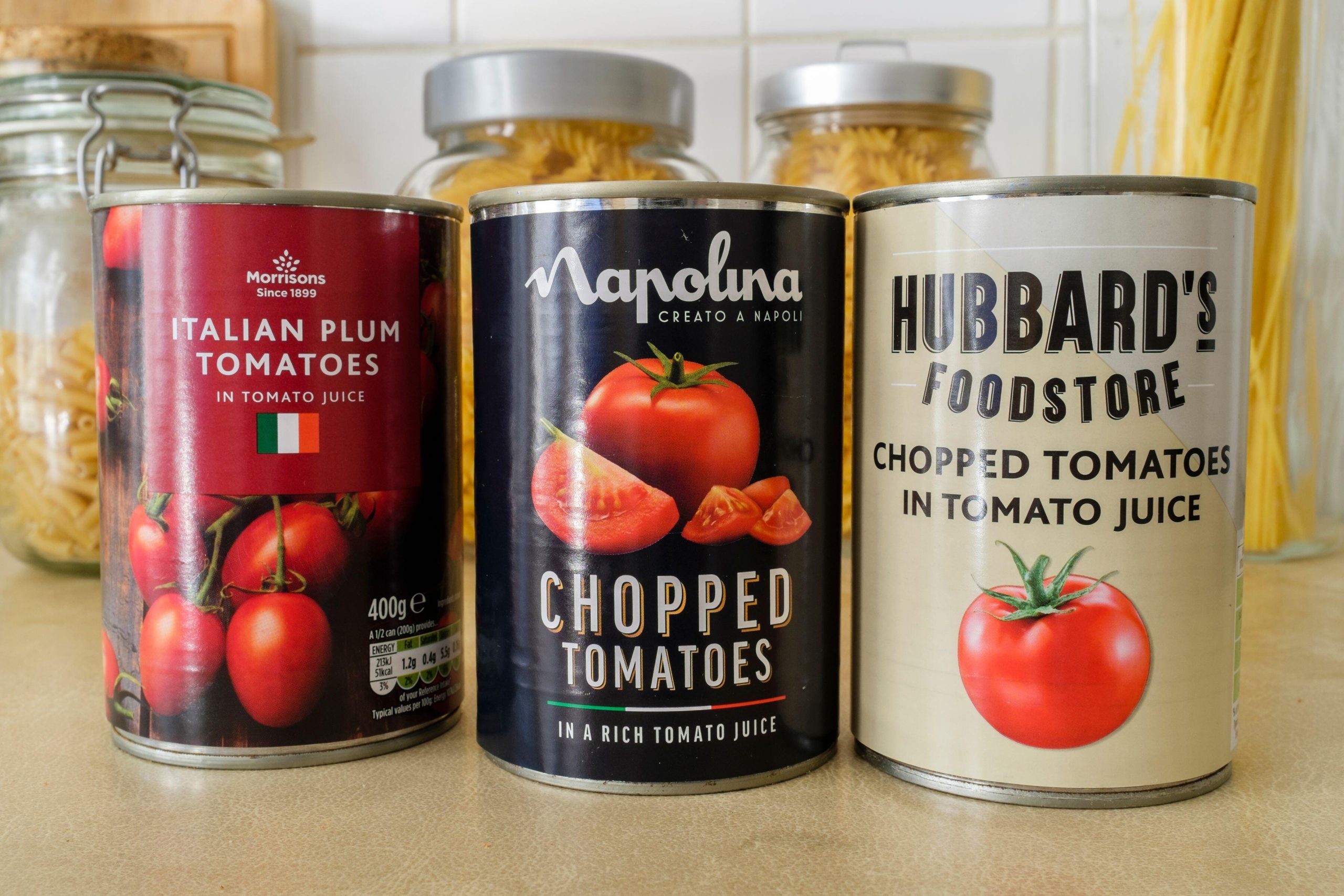
41. Don’t forget the stock Stock has got to be one of the most under-rated ingredients. Pick up a pack for as little as 80p and just watch how many meals you can use it for. It adds flavour to sauces and if you only have rice in and one type of veg or mince - it turns it into risotto.
Top tip: Stock cubes can have quite high salt levels so check this before using. Stockpots are a little more expensive but have an extra intense flavour.
42. Fill up on carbs You'll never go hungry when you have either pasta, rice or a grain like couscous in your cupboards. Rice can be easily made into risotto. Pasta just needs a little cheese and couscous, some boiling water. They're very handy when it comes to using up leftovers as, generally, most things go with all three.
43. Don’t forget beans Think beans, think baked beans? You're missing out. Pulses such as broad beans, chickpeas and lentils are store cupboards saviours. Often found in tins, they can be stored for months and are brilliant at bulking out meals when you haven't got much tin. Lentils and chickpeas can replace the meat in a meal to turn it into a cheap and healthy meal.
44. Always have eggs in Not only are eggs good for you, they can be turned into so many different meals. They really are an ingredient that is worth its cost. Got lots of leftovers but don't know what to make - crack and egg over them and fry to make a frittata or omelette. Nothing for breakfast - eggs, flour and milk is all you need to whip up some pancakes. Point proven?
Top tip: To test an egg's freshness, drop it into a glass of water. If it sinks to the bottom and stays there, it's fresh. It starts to float the older it is, if none of the egg stays on the bottom of the glass, the egg is off.
45. Stock up on condiments A well-stocked condiment cupboard is an essential tool for the home cook. Vinegars, such as red/white, cider, and rice are the basis of lots of sauces and salad dressings. Mustard is also an easy way to inject some flavour into a dish. Condiments are often inexpensive and can last for a while as you never need to use too much.
Top tip: Combine a little white wine vinegar with lemon juice and chopped mint to make a quick and easy salad dressing - it's delicious with couscous.
46. Know your herbs Fresh or dried, herbs can really transform a meal. It may cost a little to build up your collection, but once you have them, they can last for ages. Knowing what herb works with what dish can really improve the flavour - it's particularly good to give flavour to leftovers you're throwing together. A basil plant is reasonably cheap and easy to care for. We've had ours for about months now on the kitchen windowsill and it adds a ton of flavour to all sorts of dishes.
Top tip: Fresh herbs can be frozen if you notice they're going off. You could even chop them up and combine them with olive oil in an ice tray - or, roll them up with butter and freeze - for some deliciously herb-infused fats.
47. Grow your own tomatoes It can be expensive to grow your own vegetables but if there's one particular item you constantly buy from the supermarket, it might be worth looking into. Tomatoes for instance are cheap to grow - you just need to spend a little up front, then you'll be overrun with free tomatoes.
Top tip: You don't need to dig out a patch in your garden, some vegetables can be grown in pots or alongside your flowers. See our guide on how to grow your own.
48. Pick your own strawberries Take the kids and turn fruit picking into a fun activity. They'll love choosing their own fruits and may even want to get involved in the cooking too. See our guide to strawberry picking farms around the UK. You can then use your produce to make jams, sauces, desserts and freeze them. They will be there waiting for you when the season changes and prices go up.
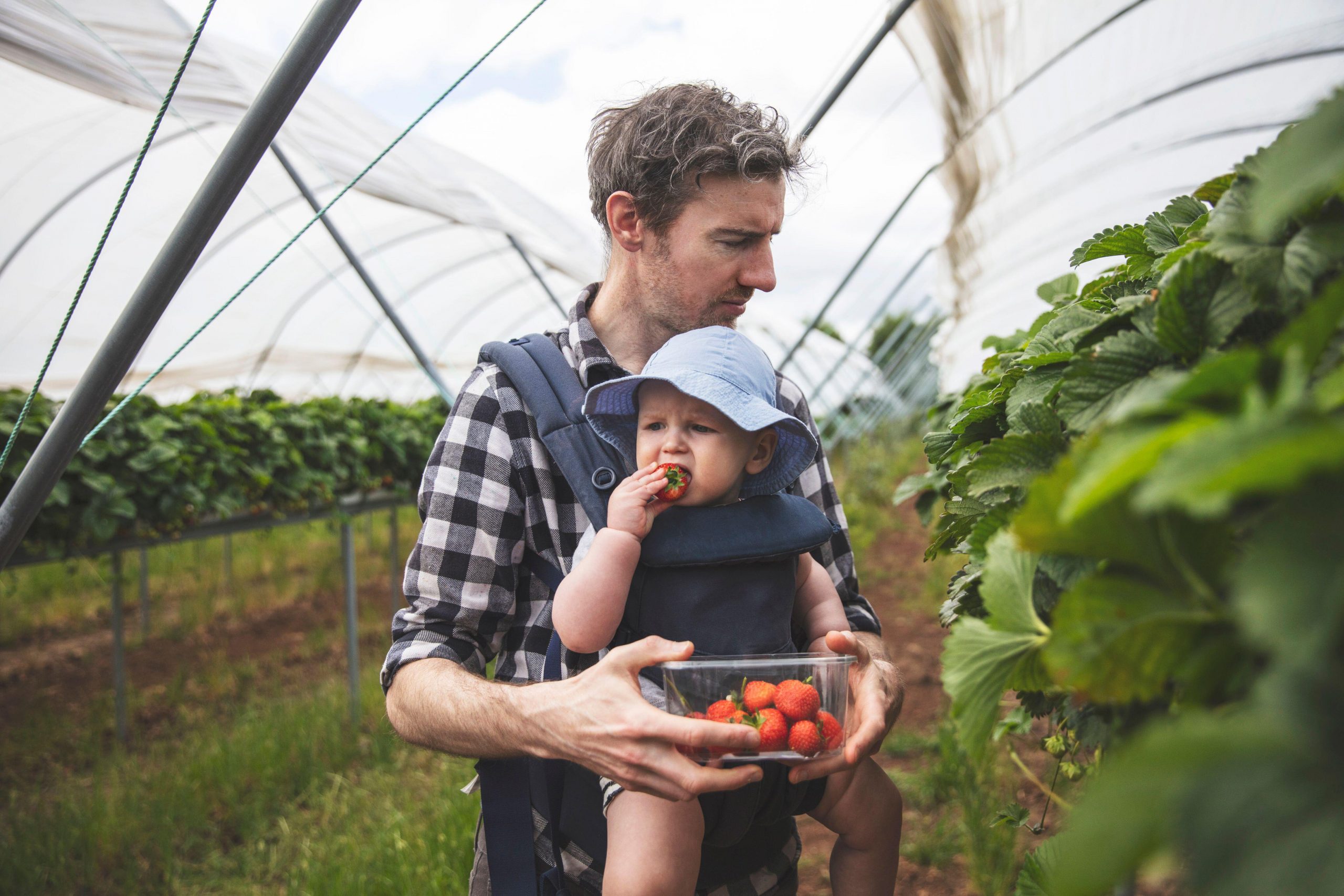
49. Get fridge and freezer smart Make sure your fridge is always set to 1-5 degrees, it ensures your chilled food lasts longer. Empty freezers are more expensive to run, so the fuller you keep it, the less energy it is using.
50. Learn what you can freeze There are lots of things you can freeze that you probably didn't realise. Cheese and rice can be stored in the freezer as can butter. A little research will show you the best way to store something if you are unsure. The majority of things found in jars or tin (such as baked beans, pasta sauces, and soups) can be frozen - you just need to transfer them to sandwich bags. Pesto can be frozen too - do it in an ice tray so you have handy servings for when you're cooking. Butter also lasts longer in the freezer than in the fridge, when you need to use some you can just grate it off the frozen block. Read our advice on:
51. Freeze spare bread straight away Bread is often the first thing to go bad. If you often find yourself throwing away the last few slices - it's worth popping it in the freezer. You can freeze a loaf whole or in portions and take it out to defrost when you need it. You can also toast individual slices straight from frozen - so it's perfect for speedy breakfasts and a great way to save money on food.
Top tip: If you know you'll be making a certain amount of sandwiches in one week, freeze the slices you need in a separate portion and defrost them on a Sunday night.
52. Smart store cupboard Don't just chuck things in a cupboard - a bit of order ensures you don't lose or forget about ingredients. Have one shelf for rice and pasta, one for tins and one for condiments. If you open your cupboard and see clearly what you have, you'll be more likely to think of a meal to make out of it. If you're a keen baker, it's a good idea to have a separate space for baking products as they can take up quite a lot of space and aren't often useful when making meals.
53. Organise your fridge New products going into a fridge can often mask others at the back, meaning they'll probably be forgotten about. As items in the fridge usually have a short shelf-life, it's important to rotate ingredients to ensure you don't miss any use-by expiry dates. Separate your shelves for old and new products. You can only move onto the new shelf once the old one is empty. Read our advice on:
- How to organise your fridge
- Foods you shouldn’t keep in the fridge
- How long to keep these cooked foods in the fridge
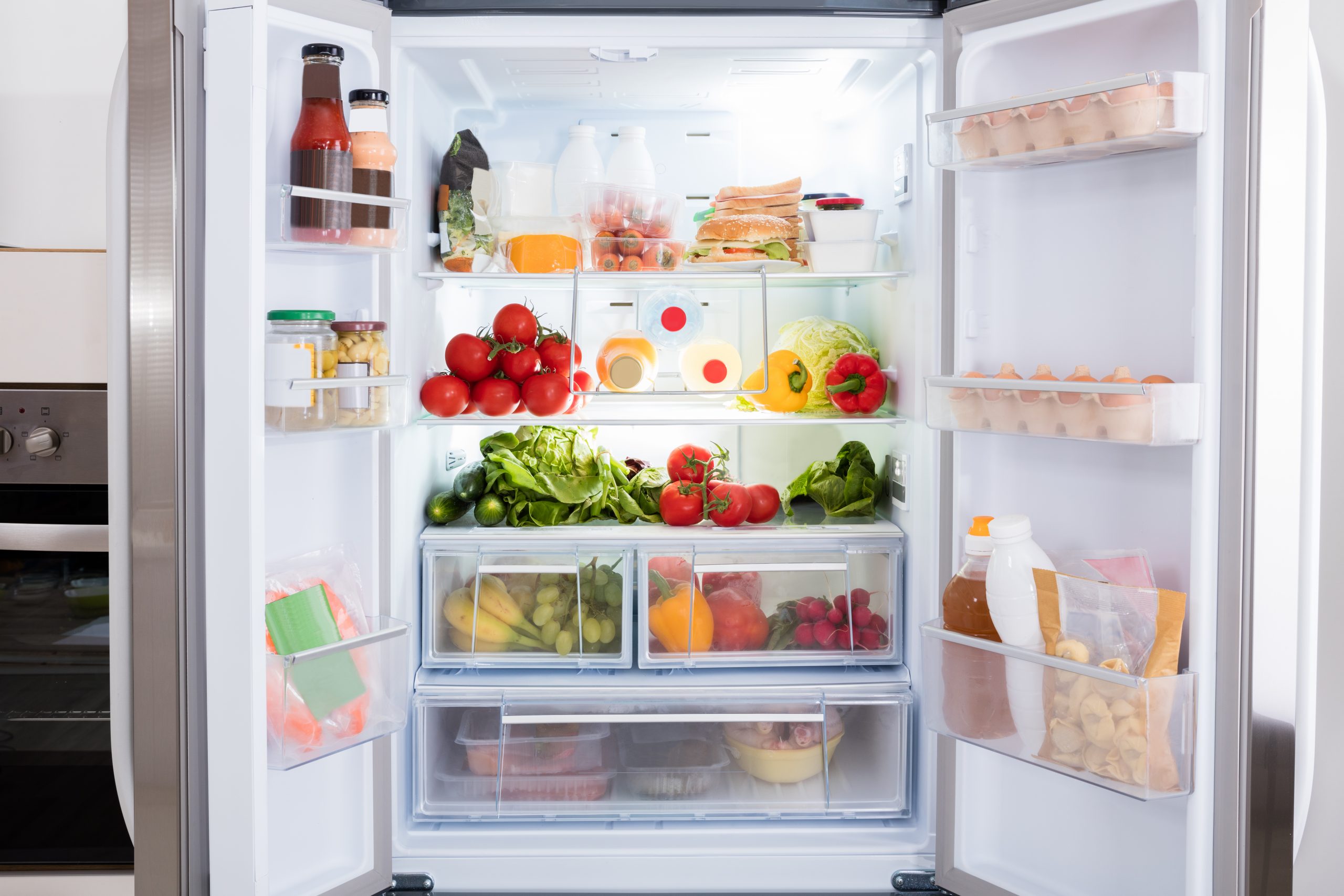
54. Plan your lunches Dinners are always the first thing we think of when shopping but lunches are just as important. If you know you'll be out at lunchtime, make sure you plan ahead to stop yourself from buying expensive, packaged sandwiches and soups.
Top tip: Include packed lunches in your weekly meal planner - link them up to dinners so you can make the most of your leftovers.
55. Watch out for bananas Did you know that one bad banana or apple can turn other fruits? When off, they emit a gas that affects the fresh fruit around them so keep an eye on your fruit and remove any bad bananas and apples as soon as they start to turn.
Top tip: If you want to make a banana cake, you need over-ripe bananas so putting an off banana next to fresh ones will speed this process along.
56. Food bag clips Some bags have a handy reusable seal which helps food stay fresher longer. Once you open a product, it will automatically begin to go off as bacteria gets to the food. If you seal the packaging shut, you can slow down this process. An elastic band will come in handy as will these food bag clips from Lakeland. Clip-lock boxes and Tupperware are also a good way to keep food fresher longer.
57. Consider a recipe box Even the best recipe boxes might seem like an indulgence, but they can be really good value. A Gousto box for two, offering four recipes each, usually totals around £35 per week. That's not bad for 8 meals. Not only does it reduce all food waste, but having your food delivered means you're less likely to go to the supermarkets and waste money on impulse buys. You're also much less likely to order a takeaway.
Cooking your food So you've shopped smartly, bought the right ingredients - now it's time to look at your cooking. The way you use your food in the kitchen obviously impacts the amount of money you need to spend on food. Read through our easy tips for how to make your food go a little bit further...
58. Batch cook Buying a lot of ingredients when they're on offer, and then using them to batch cook meals and save in the freezer is a great way to save money on food- as well as time. Ready-made portions of food in the freezer are also a godsend for days when you just don't have time to cook. Chilli, Bolognese, soups, and casseroles freeze well for up to four to six months, and once you unfreeze them you can simply bulk up the dish with pulses and extra veg if you want. This also adds extra nutrition to your meals.
Top tip: A big batch of mince could be used to create spaghetti Bolognese, lasagne, meatloaf.... the list goes on. See our 100+ recipes with mince.
59. Use all your food Chances are, you can make better use of the food you buy by eating every part of it. For example, do you cut off cauliflower stems and leaves, even though the whole thing is entirely edible? And what about vegetable scraps? You might bin them, but they can be used to make vegetable stock, or put in soups. Use cheese that’s gone hard by grating it into your food while it cooks, or putting it in a food processor.
60. Learn to improvise Shopping recipe to recipe can really mount up the costs. If you want to try a recipe but don't have all the ingredients, you don't necessarily need to head to the shops. A little research could provide an alternative you already have in or one you could whip up. Buttermilk, for example, can be made by adding lemon juice to milk.
61. Know your ingredients Understanding how to use your ingredients is the best way to ensure you make the most of your food shop. Knowing how to cook each ingredient, how many dishes they can be used in, and how to store it fresh, will reduce food waste.
Top tip: Learn what ingredients can be frozen straight from the shop and what leftovers can be frozen - you'll find your waste food will dramatically decrease.
62. Learn the classics Learning a few classic dishes will increase your confidence and your cookery skills. Once you know the basics, you'll be able to experiment and use your ingredients to create lots of different dishes You may even be able to make up recipes from scratch, which is so much cheaper than ready-meals. We've rounded up the top 57 recipes everyone should know how to cook - how many can you tick off?
63. Eat smaller portions It’s easy to eat more than you need, and food often comes in larger portion sizes than you need. You may be able to get more from a meal if you measure out the recommended sizes. For example, a serving portion of chicken should fit in the palm of your hand, and half a small cup of uncooked rice, or 50g of pasta, is enough per person
64. Save on sauces One of the biggest cost-cutting skills to learn is how to make sauces. It's easy to reach for a ready-made sauce but once you know how to whip them up, you'll wonder why you ever bought them. Cheaper and much tastier, homemade sauces also mean fewer additives. A much healthier way to save money on food.
65. Make your own bread There are certain items that are much cheaper to make at home than buying ready-made. Making your own bread will take a little effort but the results are normally much tastier. Bread is one of the cheapest things to make - all you need is some flour, yeast and a pinch of salt.
66. Make your own cereal Cereal is a very expensive product to buy and, if you eat it every morning, it can be used up quite quickly. It's easy to make up your own cereal and because it's homemade you can make sure it's a healthy start to the day. Muesli, granola and porridge are made using ingredients that are cheap to buy in bulk so you can stock up and make cereal for weeks.
Top tip: Make batches for the family that feature their favourite ingredients - dried fruits and a little sweet twist can make muesli seem like a treat.
67. Stretch your roast A Sunday roast is a good excuse to go all out and cook lots of lovely side dishes and a nice big piece of meat. It's also one of the biggest jackpots when it comes to leftovers - nearly everything can be re-used for meals in the upcoming week. We know you're full after eating and may not want to think about it while clearing away, but a few minutes spent freezing the chicken, potatoes and veggies will result in far less waste. Read our advice on how to use up Sunday roast leftovers.
Top tip: You can always serve a mini roast on Monday night using the leftovers - who would complain about roast, two nights in a row!
63. Keep the carcass It may not look like the most appetising thing in the world but meat carcasses from chicken, turkey and lamb are still full of flavour. If you can't think what to do with them right away you can freeze them and use later. Carcasses make great bases for stock, soup and if you have a few, you can put them in the slow cooker to make a delicious casserole. See our recipes for chicken stock and turkey stock.
Top tip: Store a carass in box all on its own so you can keep any meat that falls away from the bone.
64. Cut up meat before freezing Cooked meat lasts a few days in the fridge, if you don't think you are going to use it again in that time frame - freeze it! Cutting chunks of meat into strips means you can grab a handful and add to meals like stir-fries or pasta.
Top tip: Cut up fresh chicken breasts into strips before freezing, that way you only have to defrost what you want to use, rather than the whole lot.
65. Make the most of your ice trays Hands up if you just use your ice tray for ice. There's so much more it could be doing. The individual portions are a great way of separating out ingredients into smaller servings - which means you can easily use and defrost the amount you need. Sauces, pesto, fruit, anything can be poured into an ice tray and popped out when you need it.
Top tip: If you've got leftover dregs of wine, pour them into your ice cube tray and use to add to sauces.
66. Know your portion sizes Most of us are guilty of cooking more food than we actually need. If you know how to make the most of leftovers, it's not the end of the world but knowing the correct portion sizes will make your meal times more cost-efficient.
67. Save leftovers with reusable bags It can be hard to find space for lots of plastic tubs in the fridge and freezer, which is why sandwich bags come in handy. Liquid leftovers such as stock, soup or gravy can be poured into a bag and, as long as they're properly sealed, can be stacked up in the fridge. Look for reusable sandwich bags to ensure no spillages.
68. Create soups with leftovers Soup is the saviour of leftovers. Pretty much anything savoury can be blended down to make a soup. All you need is a little stock and that's pretty much it. Boil all your ingredients together with the stock and blend with a stick blender if you want a smoother finish. Vegetables, meat, even lettuce can be added to the broth, so it's a great way to through all your leftovers together in one meal. See our massive collection of healthy homemade soup recipes.
Top tip: Make a big batch of chunky soups at the start of the week and freeze in individual portions. Whenever you need something for lunch or a light dinner, you will have a delicious option close to hand.
69. Smooth leftovers If soup is the saviour of savoury leftovers, smoothies are equivalent to fruit. Blend any leftover fruit with a little milk, frozen yogurt or even ice cream if you're feeling a little naughty and voila! A touch of honey will add a lovely sweet finish too.
Top tip: If your fruit is looking a little off, stick it in the freezer immediately. You can use frozen berries in smoothies and bananas just need a little time in the microwave to defrost.
70. Make compotes and jam But leftover fruits aren't just for smoothies. If you simmer them down with a little sugar you can easily turn them into a tangy compote or jam recipe. Compotes can be made and frozen and are delicious atop cereals, ice cream and even beneath a crumble topping for a speedy dessert. Save old jam jars so you have lots of spaces to store your fruity creations.
71. Don’t chuck the gravy Is is just us or is there always loads of gravy leftover from a Sunday lunch? Use leftover gravy from roast dinners as the base for stews or casseroles - delicious! Gravy can be frozen in portions so if you're not planning of using it a few days after making, stick it in the freezer.
72. Make your own ice lollies Leftover juice, milk, yogurt and fruit can be turned into delicious ice lollies. All you need to do is blend the ingredients together and pour into some moulds with a lolly stick. It's always nice to have something sweet in the house and you won't have to worry about the additives in shop-bought ice lollies.
Top tip: If you don't have lolly sticks to hand, you can always freeze the mixture in small portions and serve with a spoon.
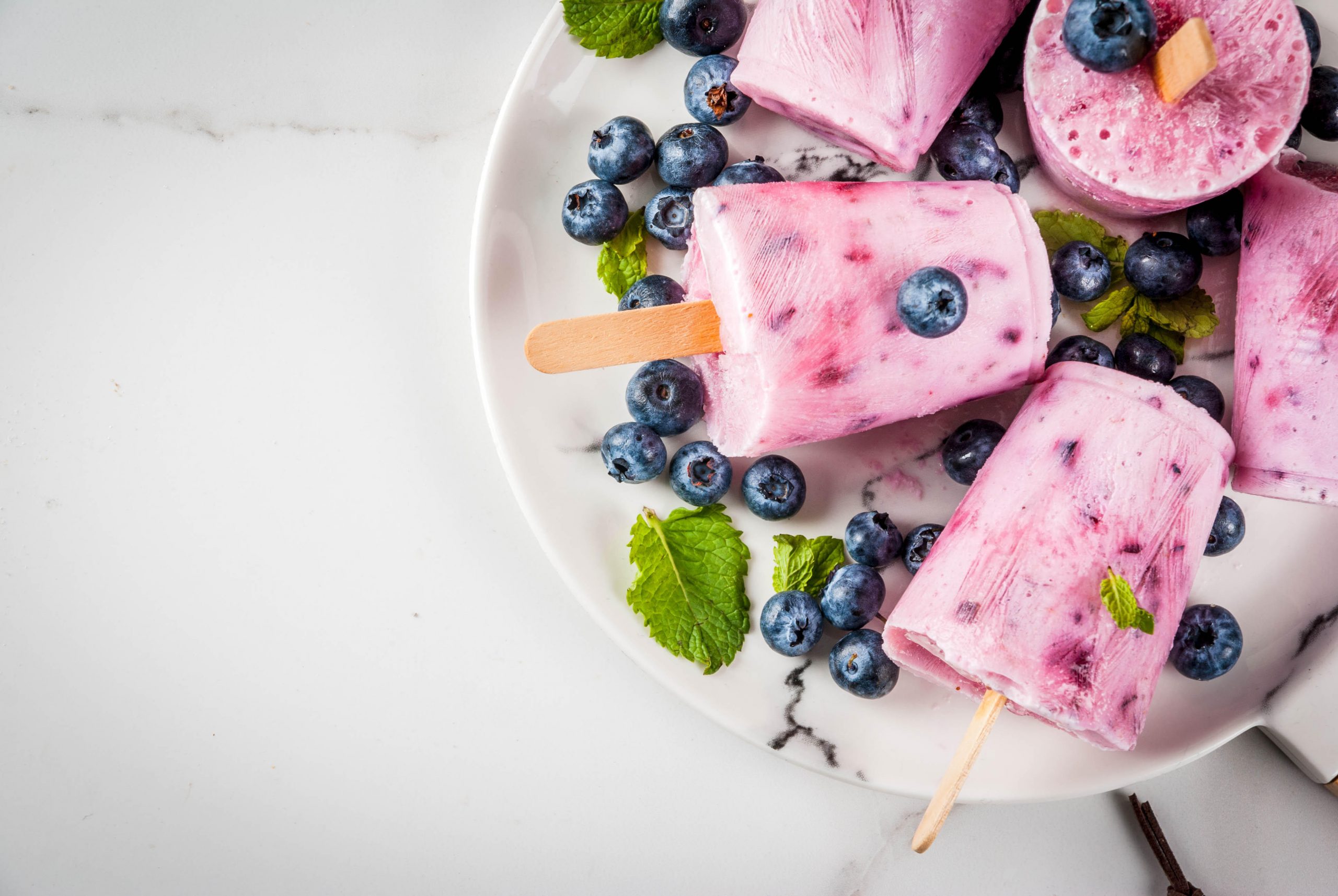
73. Slice and freeze lemons and limes Do you have a favourite tipple on a Saturday night? If you've got a few lemons and limes that are looking a little ropey, slice them up and stick them in the freezer. Frozen fruit makes a more flavoursome change to ice cubes - and you won't have to worry about the water diluting your drink!
74. Homemade stock A good stock is the basis of lots of meals - it's also a good use of leftovers. Chicken and lamb bones can be boiled with water to make a meaty stock. Vegetables can also be given the stock treatment. Make a big batch and freeze in portions. Check out our easy stock recipe to see how it's done. Soup made from homemade stock will have lots more flavour than a ready bought stock cube.
75. Bake cakes with your leftovers Like we need an excuse to make a cake! One way to use up leftovers is by turning them into a freshly made cake. As we mentioned already, bananas are better to bake with if they're past their best and pretty much any fruit can be baked into something delicious. It's not just fruits, vegetable cakes such as carrot cake and courgette cake are tasty ways to use up your veggies.
76. Add a topping Sometimes you don't need to turn your leftovers into anything, with a little sauce and a cheesy or crunchy topping and you can create something that doesn't really have a name but is delicious nonetheless. A simple topping of breadcrumbs or grated cheese provides a lovely flavour to leftover vegetables, while a few tablespoons of oats or custard can transform leftover fruit.
77. Make the most of stale bread Bread looking a bit ropey? Rather than trying to use it up or chucking it away, simply whizz it in a food processor to make some breadcrumbs and stick them in the freezer. Breadcrumbs can be used to top pasta bakes, coat pieces of meat or fish and in stuffing. If you don't have a food processor, you can break down the bread with your hands - it'll just take a little longer. Older bread is also perfect for making bread and pudding.
78. Bulk it up Couscous, bulgar wheat, rice, quinoa, or even pasta can help bulk up salads, leftover veggies, or a bowl of soup into a completely different dish. Cheap to buy and easy to store, these long-lasting ingredients are high fibre foods - helping to keep you feeling fuller for longer.
79. Don’t forget potatoes Potatoes are one of the most wasted foods. It's hard to imagine what you can do with a potato once you've cooked it but there are some options. Roast potatoes can be mashed down or turned into a soup, new potatoes can be thrown into a traybake and mashed potatoes can be turned into gnocchi.
Top tip: Keep fresh potatoes in a cool and dry place to stop them from sprouting.
80. Don't miss out on that last bit of ketchup Get to the end of a tomato ketchup bottle or mayo and you can't seem to get any more out? Add a tiny amount of vinegar and give it a shake, you should be able to get a few last dollops out.
81. Throw it all together A few throw-it-together meals are always handy for those last few days before the big food shop. Once you know them, you'll be able to make a meal out of pretty much anything, such as - stir-fries, omelettes and traybakes
82. Make a ‘bung it all in lasagne'
It’s obvious, but using all of the food you buy means you’re getting more for your money. Cherry Healey told us. ‘‘One of the best things you can make is a ‘bung it all in lasagne’. That is just the best way to use up every last bit in your fridge. Chop all your leftover veg and meat, and then you make a lasagne. All you need is the pasta layers and the cheese sauce and the rest of it you can make up. It always tastes really good, you can freeze it.
83. Use clever kitchen gadgets
Soup makers and slow cookers are often cheap to buy and will help you save money on food in long term. They also save on your energy costs while you cook (find out how much it costs to run a slow cooker), and make magical use of leftover food. They make it really easy to batch cook, too. Have a look at the best slow cooker recipes for some inspiration. Even a cheap beef brisket tastes amazing when it’s been slow-cooked for 12 hours. A hand blender is also very useful. Not only can you make soups and sauces - you can even whip up a speedy salsa with some leftover tomatoes.
Anna Bailey has been the editor of GoodtoKnow since 2018. Before joining the team she was Features Editor at MSN UK, where she oversaw Family Health and Days Out. Previously, she was Digital Lifestyle Editor for the broadcaster UKTV, and Lifestyle Editor for ITV.com. Anna studied Multi-Media Journalism at Bournemouth University and went on to gain her NCTJ and NCE journalism qualifications. Anna is responsible for driving the direction and editorial strategy of Goodto. A mum and experienced baby product tester, she is passionate about providing safe, trustworthy, and relatable advice for families of all kinds.
-
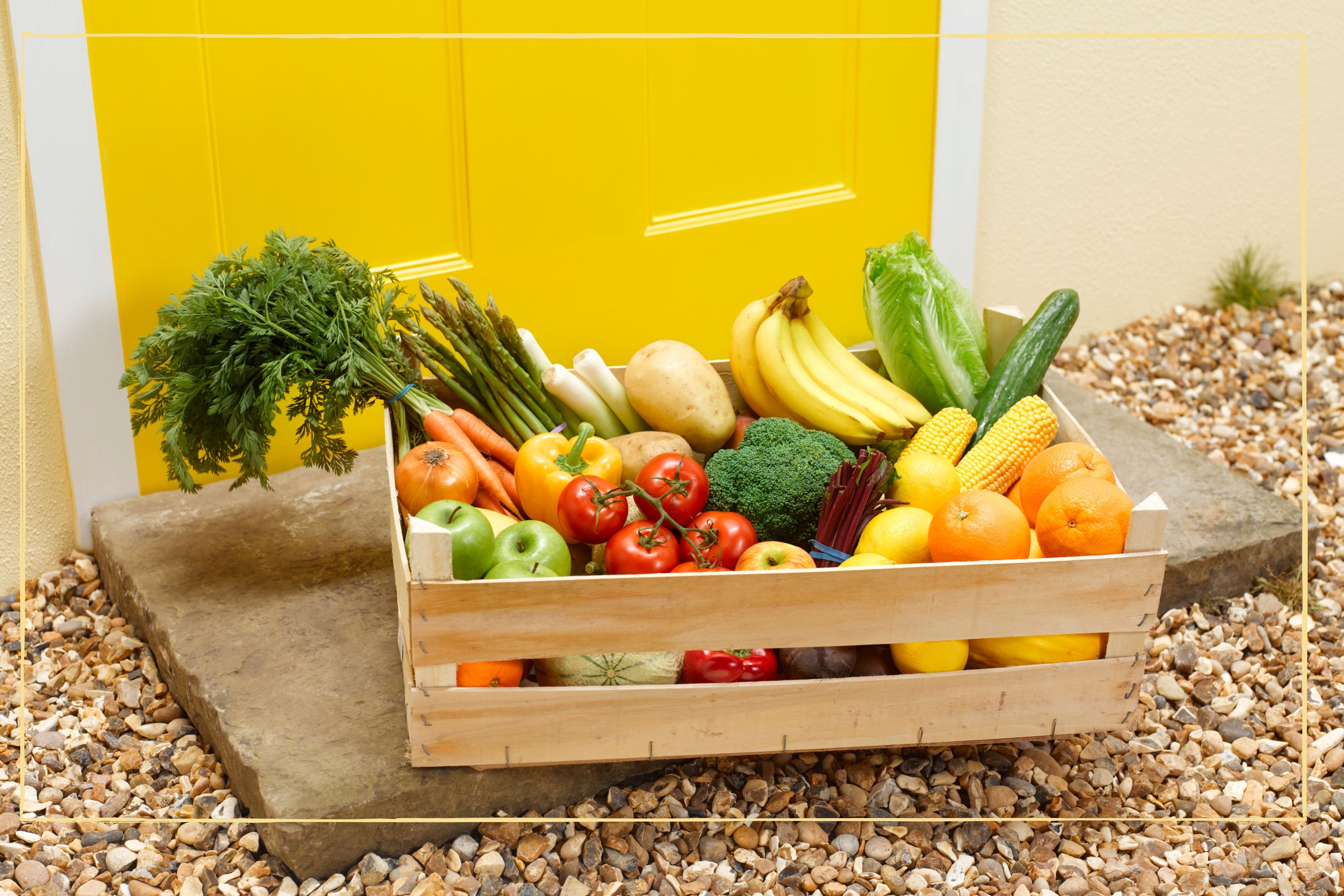 Ocado's incredible Fill Your Freezer deal for families will slash £'s off your food shopping bills
Ocado's incredible Fill Your Freezer deal for families will slash £'s off your food shopping billsThe supermarket is offering five items for £10 across its frozen desserts, ready meals, fruit and vegetables.
By Selina Maycock Published
-
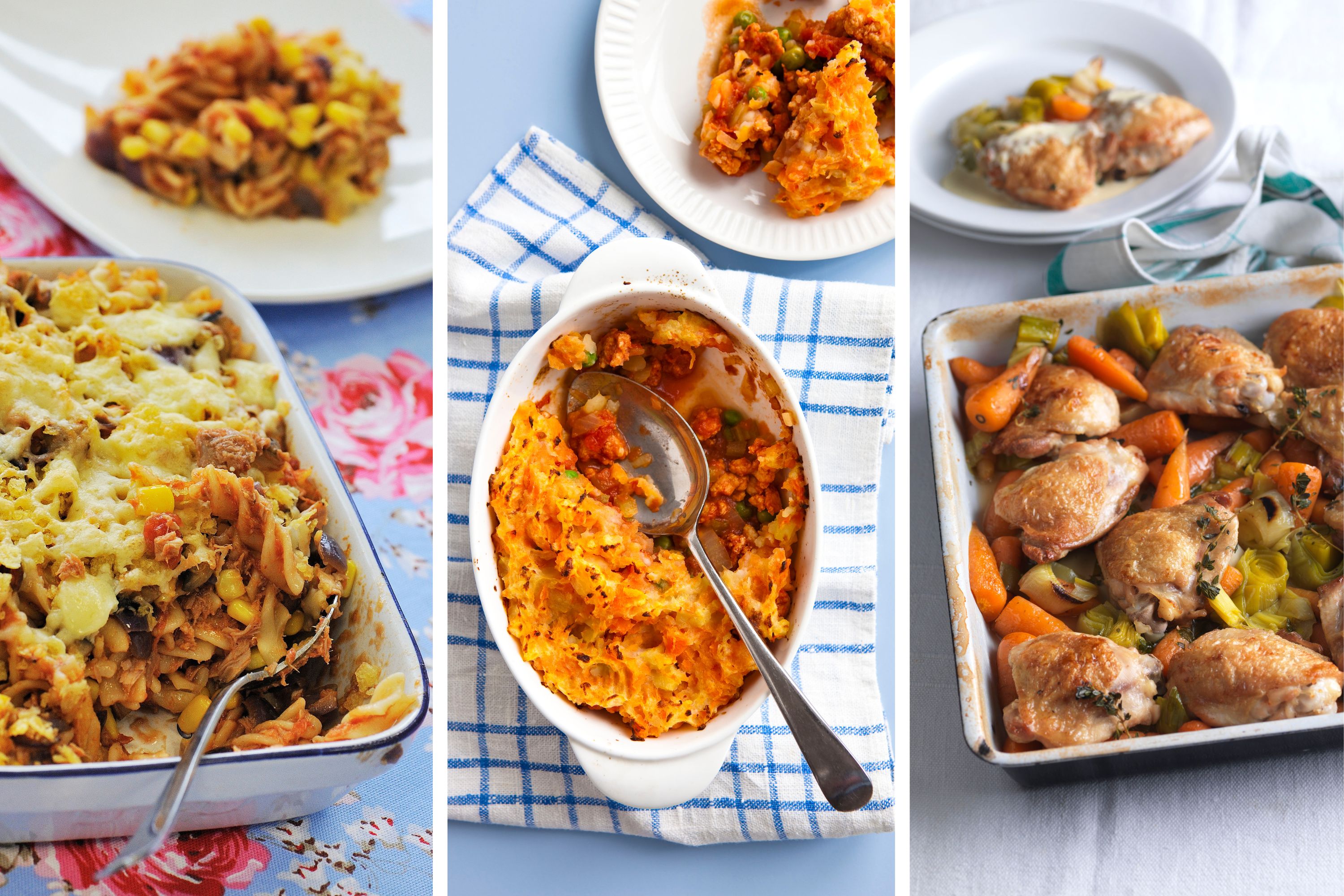 Cheap family meals: 25 budget dinners every parent needs to know about (and they're all under £2 a head)
Cheap family meals: 25 budget dinners every parent needs to know about (and they're all under £2 a head)Casserole, pasta bakes, and more; save money with these cheap family meals - perfect for those on a budget...
By Octavia Lillywhite Last updated
-
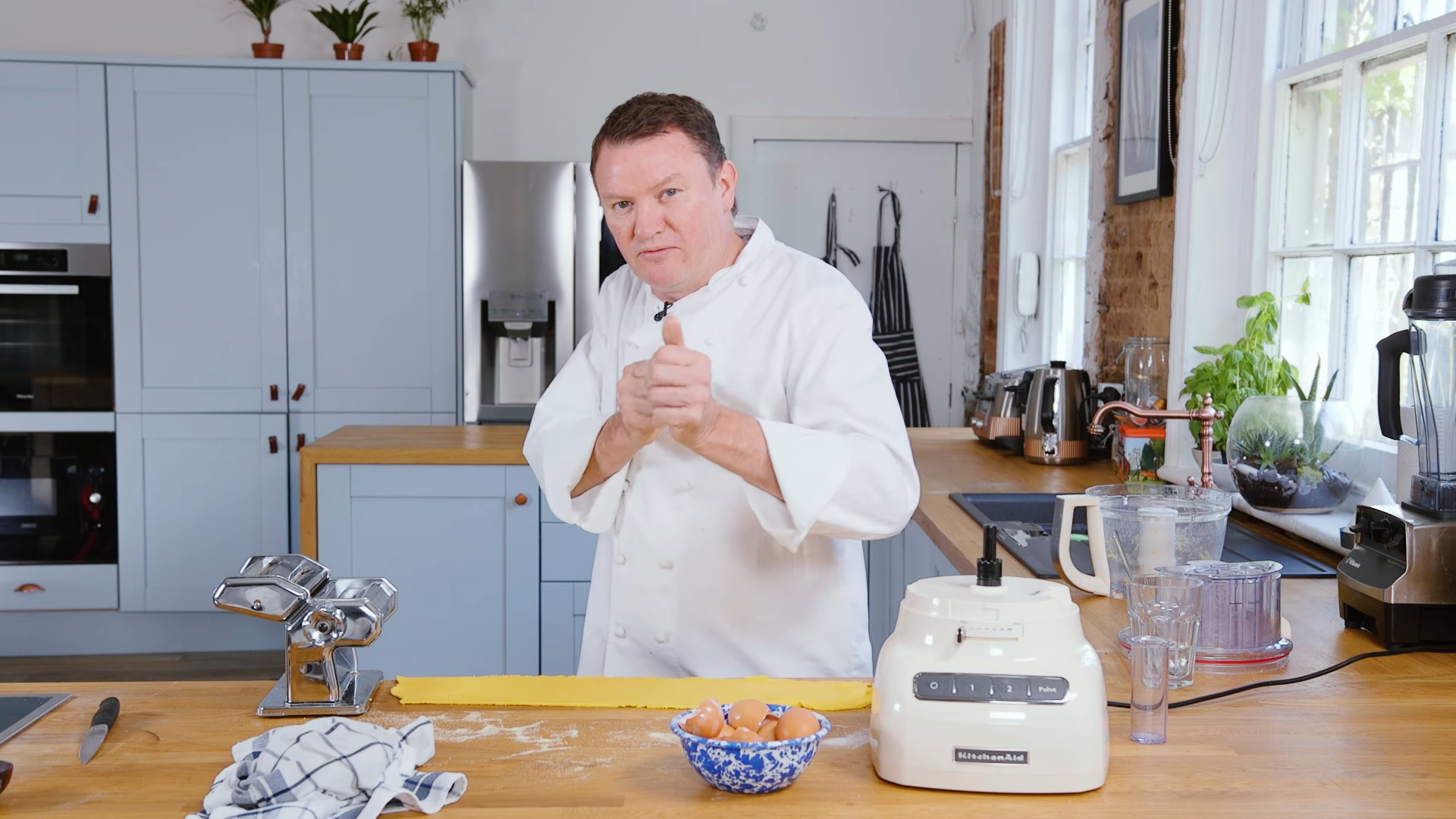 How to make fresh pasta with Theo Randall
How to make fresh pasta with Theo RandallLearn how to make homemade pasta using celebrity chef Theo Randall's signature recipe...
By Keiron George Published
-
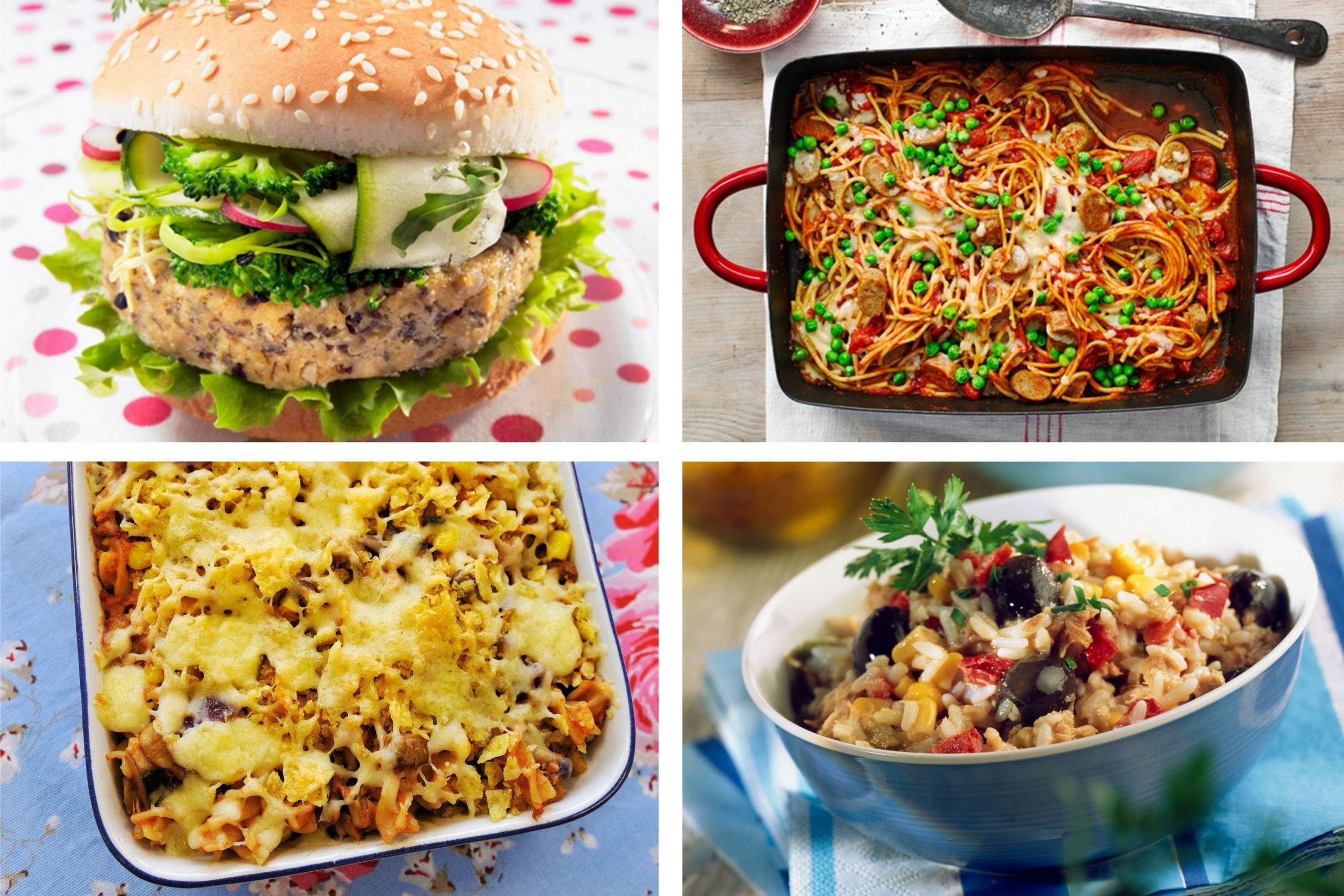 22 money-saving store cupboard meals using tinned or packet ingredients
22 money-saving store cupboard meals using tinned or packet ingredientsMoney-saving recipe ideas using ingredients from your kitchen cupboard - quick, easy and cheap
By Lara Kilner Last updated
-
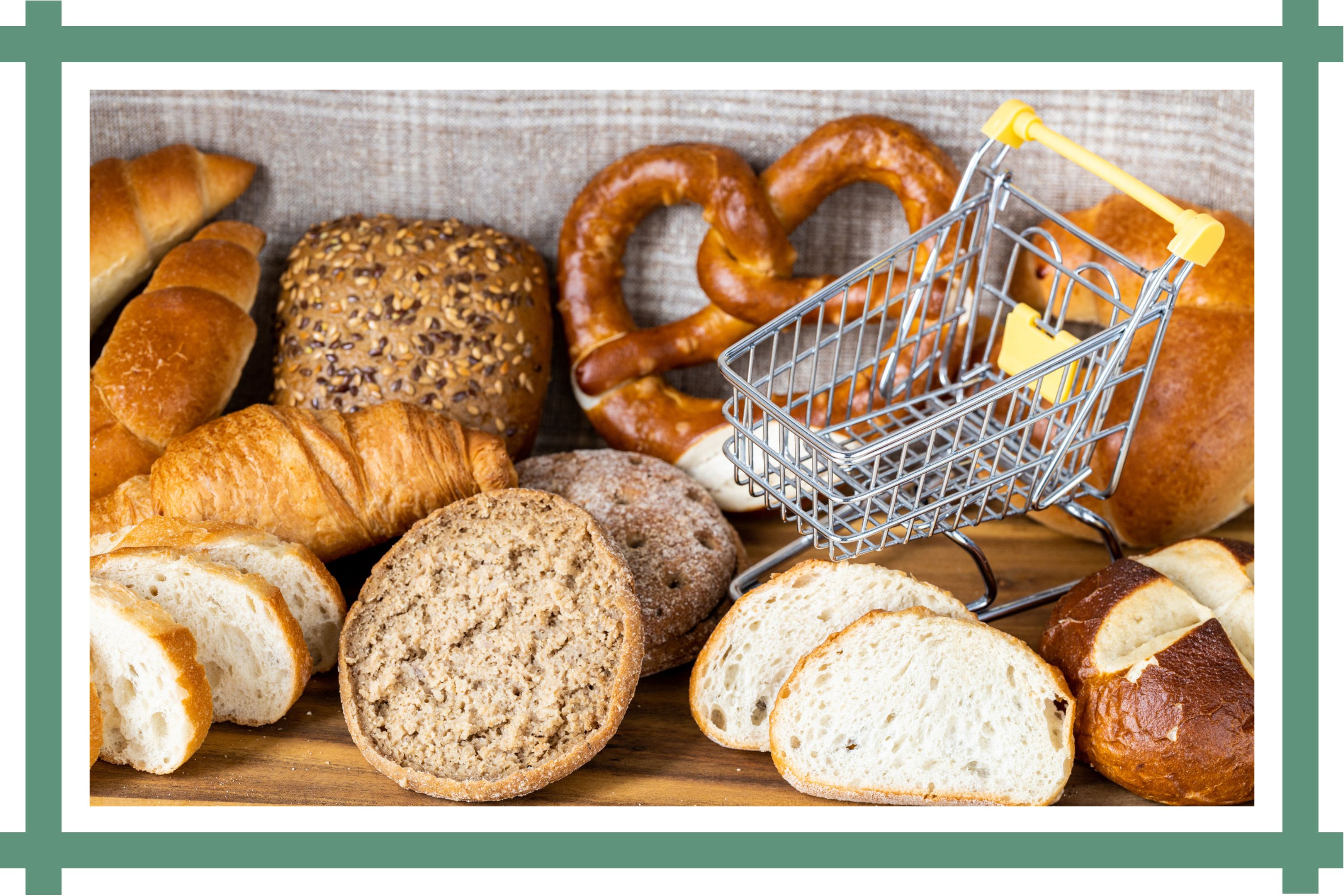 Budget baking tips: 9 ways to make cheap cakes
Budget baking tips: 9 ways to make cheap cakesA roundup of our best budget baking tips to save money - ideal for avid bakers who have been impacted by the cost of living crisis...
By Lara Kilner Published
-
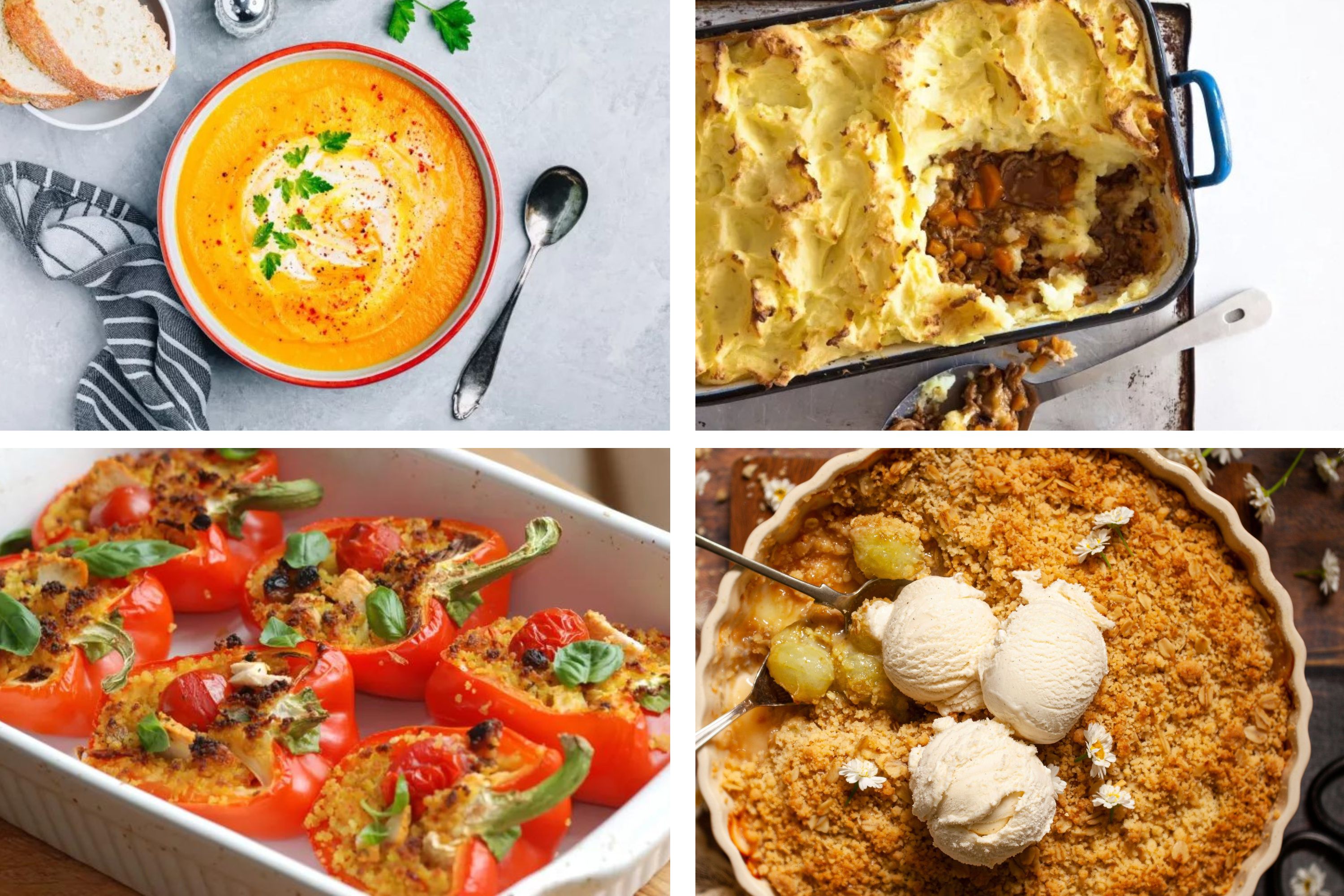 Freezer meals: Money-saving recipes to make in bulk
Freezer meals: Money-saving recipes to make in bulkSave time and money with these family-friendly freezer meals - just perfect for bulk cooking...
By Lara Kilner Last updated
-
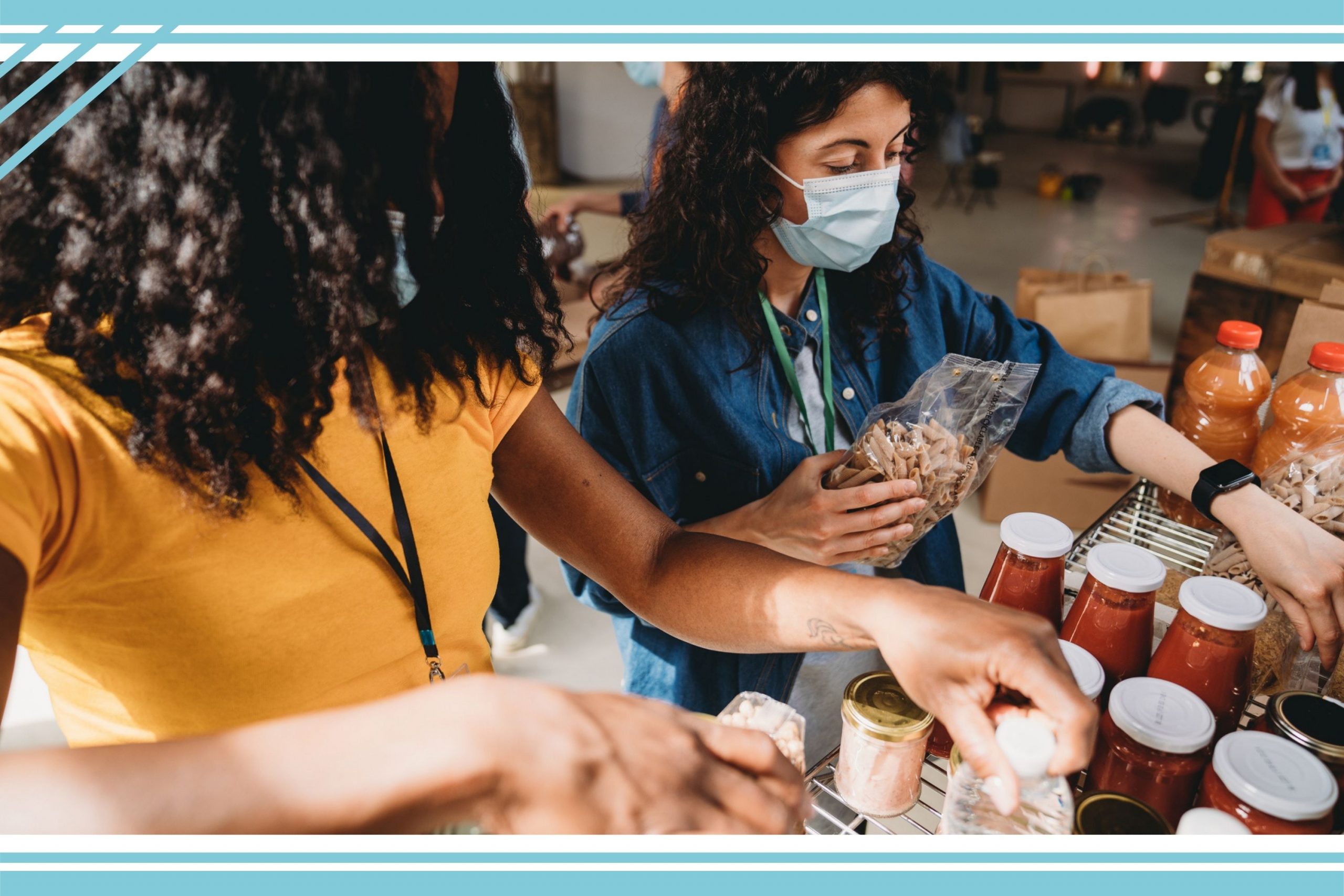 Local food banks: Food banks near me and how to get a food bank referral
Local food banks: Food banks near me and how to get a food bank referralThe easiest ways to find a local food bank near you - and how to seek additional support
By Jessica Dady Published
-
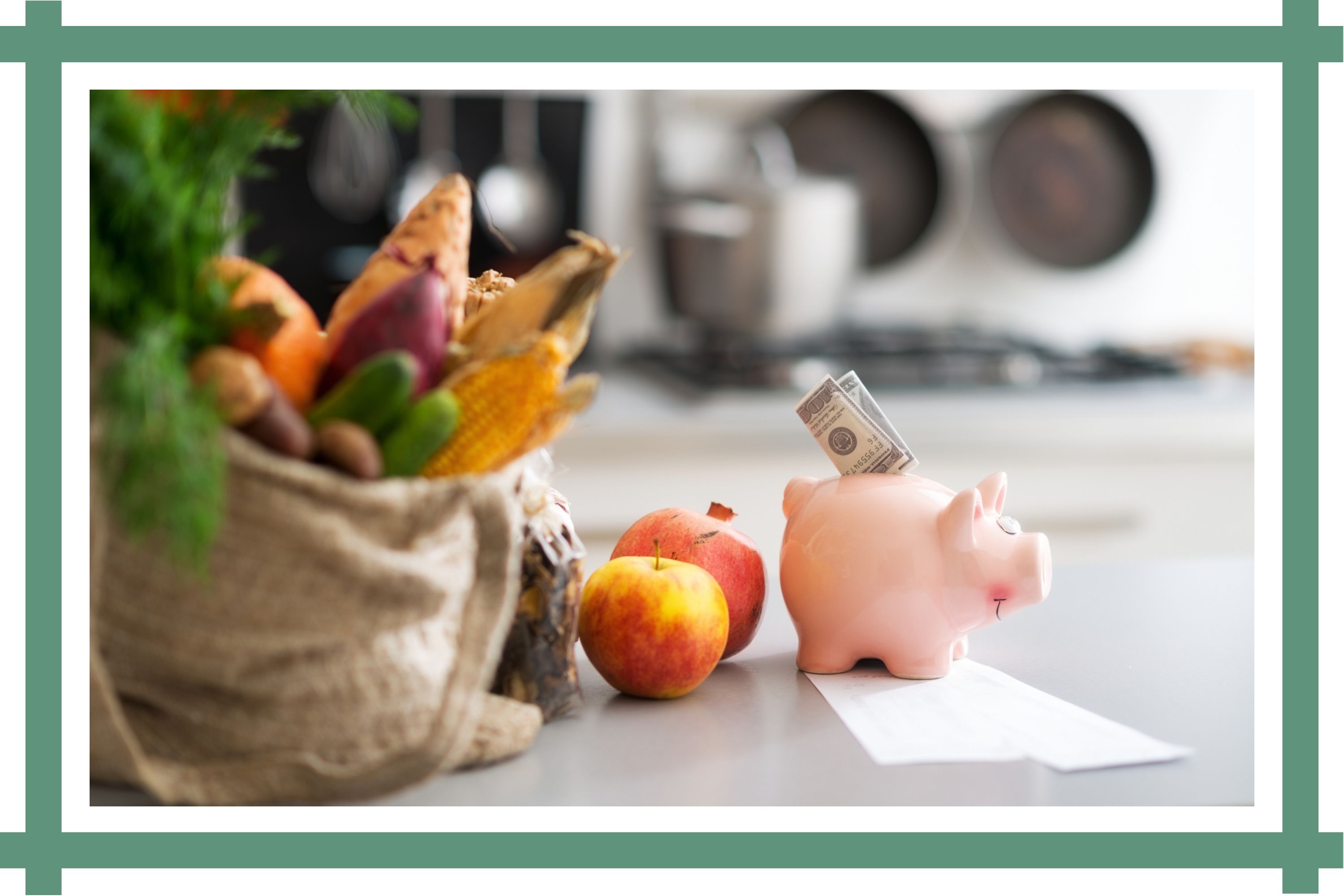 Food hacks: 23 clever tips and tricks to save money
Food hacks: 23 clever tips and tricks to save moneyMake the most out of your food shop with these nifty food hacks, tips, and tricks. From peeling ginger so there's no waste, to using leftovers...
By Lara Kilner Last updated